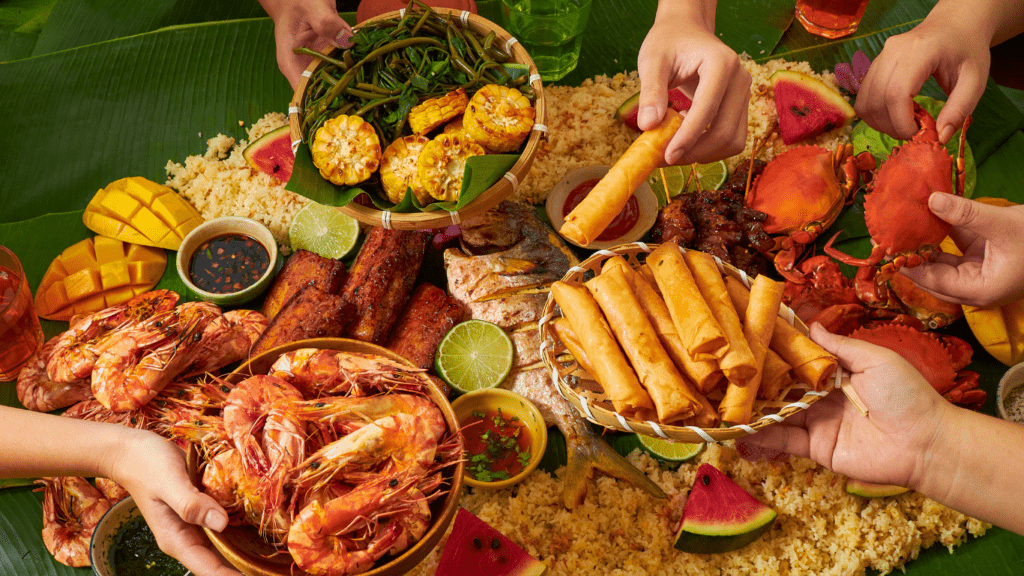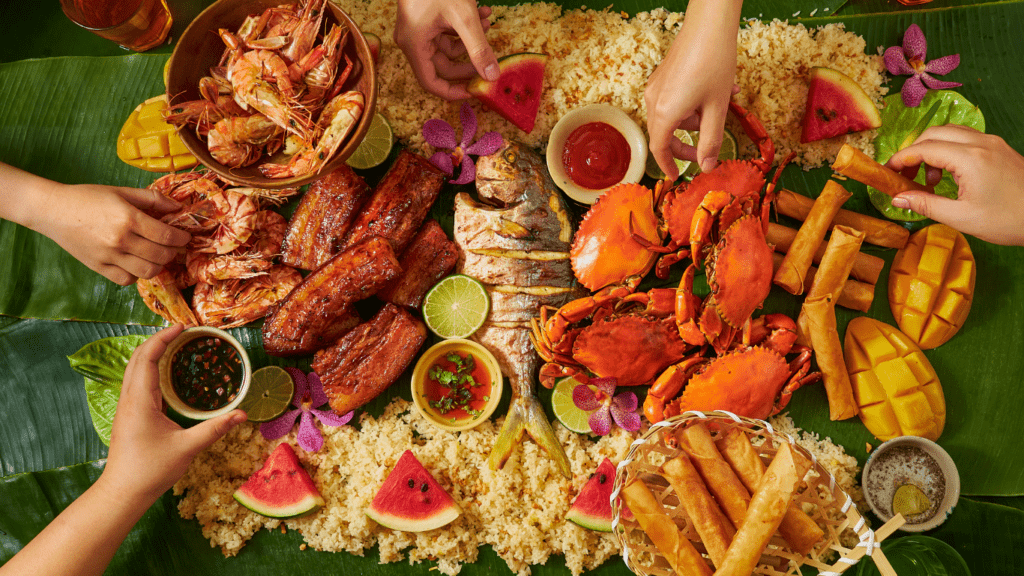Food isn’t just sustenance; it’s a vibrant expression of culture, history, and identity. Every bite tells a story, connecting us to the traditions and rituals of communities around the globe. When I travel, I find that tasting local dishes opens a window into the heart of a place, revealing its values, beliefs, and even its struggles.
Exploring food as culture allows us to appreciate the rich tapestry of human experience. From the spices of Indian curries to the simplicity of Italian pasta, each cuisine offers a unique perspective on life.
Join me as I embark on a flavorful journey, uncovering how the world’s culinary traditions reflect the diverse cultures that shape our lives.
Overview of Food as Culture
Food represents more than nourishment; it embodies cultural heritage and shared experiences. Each dish carries historical significance and social context, acting as a medium for storytelling.
Traditions passed through generations shape culinary practices, reinforcing community ties and individual identities. Various cuisines reveal the values of their cultures. For instance, communal meals in many Asian countries reflect the importance of family and togetherness.
Similarly, the ritualistic preparation of foods during festivals showcases cultural beliefs and customs, enriching the communal experience. Cooking methods also highlight geographic and environmental factors.
Indigenous ingredients tell the story of local agriculture and climate, while preparation techniques reveal historical influences, such as colonialism or migration. Overall, the study of food facilitates an understanding of the complexities of human societies.
When I explore different cuisines, I engage with the essence of each culture. Whether sampling Moroccan tagines or savoring Japanese sushi, the flavors I taste transport me to their origins, offering insights into the daily lives and philosophies of the people behind the food.
The Connection Between Food and Identity
Food deeply intertwines with identity, reflecting cultural heritage and personal stories. Each dish narrates the history and experiences of the people who create and consume it.
Exploring Culinary Traditions
Culinary traditions carry profound significance across cultures. Regional ingredients, cooking techniques, and flavors shape distinct culinary identities. For instance, Indian cuisine blends spices, showcasing both complexity and regional variations.
Italian cuisine celebrates regional dishes based on local produce, emphasizing tradition and family recipes. Each food tradition embodies unique customs and beliefs, illustrating how local practices influence identity.
The Role of Food in Community Bonds
Food often serves as a cornerstone for community connections. Shared meals foster relationships and unite individuals within communities. Family gatherings, potlucks, and festivals revolve around food, reinforcing social ties.
For example, many Asian cultures prioritize communal dining, where multiple dishes are shared, enhancing interaction and togetherness. Ritualistic food preparation during celebrations strengthens cultural identity, creating lasting memories and shared experiences that bind community members.
Regional Cuisines Around the World
Exploring regional cuisines reveals the unique cultural identities and historical narratives woven into each dish. Each region offers distinct flavors shaped by local ingredients and traditions.
Asian Culinary Heritage
Asian cuisine boasts incredible diversity across countries and regions. Indian curries illustrate the mastery of spices, blending flavors to create complex dishes. Chinese cuisine emphasizes harmony and balance, showcasing techniques like stir-frying and steaming.
Thai flavors combine sweet, sour, salty, and spicy elements, with dishes like Pad Thai embodying this philosophy. Japanese cooking highlights seasonal ingredients, with sushi and ramen exemplifying artful presentation and meticulous preparation.
Each dish reflects the cultural values and traditions of its region, creating a rich tapestry of culinary heritage.
European Culinary Influences
European cuisines vary significantly, each influenced by geography, climate, and history. Italian cooking focuses on simplicity and regional ingredients, with pasta and pizza as global staples.
French cuisine emphasizes technique and refinement, showcasing dishes like coq au vin and bouillabaisse. Spanish tapas culture promotes sharing and social interaction, while Eastern European fare often highlights hearty, comforting dishes like pierogi and borscht.
Each culinary tradition offers a glimpse into the local customs and the societal connections tied to food and family.
African and Middle Eastern Flavors
African and Middle Eastern cuisines celebrate bold flavors and aromatic spices. North African dishes often feature couscous and tagines, combining sweet and savory elements. In the Middle East, dishes like hummus and kebabs highlight the importance of sharing food among friends and family.
Diverse ingredients such as lentils, grains, and spices contribute to a rich culinary landscape. Traditional cooking techniques often reflect communal practices, with meals serving as a central part of social gatherings and celebrations.
The Americas: A Melting Pot of Flavors
American cuisine represents a fusion of cultures and traditions, shaped by Indigenous peoples, European settlers, and African influences. Latin American dishes like tacos and empanadas emphasize bold spices and vibrant flavors.
The Southern U.S. is known for its comfort foods, such as fried chicken and collard greens, rooted in African American heritage. Canadian cuisine incorporates elements from Indigenous practices, British, and French influences, evident in dishes like poutine and butter tarts. The diverse culinary landscape of the Americas showcases the complexities of cultural exchange and adaptation throughout history.
Impact of Globalization on Food Culture
Globalization significantly influences food culture across the globe. It facilitates the exchange of culinary practices, ingredients, and traditions among countries, creating new culinary landscapes.
- Increased Accessibility: Globalization makes diverse ingredients more accessible. Unique spices from India, fruits from Central America, and grains from Africa appear in local markets worldwide, allowing me to experiment with flavors from various cultures in my kitchen.
- Fusion Cuisine: Globalization has popularized fusion cuisine, where chefs blend elements from different culinary traditions. Sushi burritos and taco pizzas reflect innovative combinations that celebrate multicultural influences.
- Cultural Homogenization: Globalization risks cultural homogenization. Fast food chains expand internationally, often overshadowing local traditions. This leads to a decline in regional cuisines, as familiar flavors take precedence over traditional dishes.
- Culinary Tourism: Increased connectivity encourages culinary tourism. Travelers seek authentic food experiences, contributing to the preservation and revitalization of traditional cooking methods that might otherwise fade away.
- Digital Influence: Social media shapes food trends globally. Platforms like Instagram and TikTok showcase diverse dishes, prompting me to explore cuisines I may not encounter otherwise.
- Food Identity: Globalization affects individual and collective food identities. As cultural influences merge, people redefine their culinary practices, blending heritage with contemporary trends.
- Sustainability Awareness: Global food networks highlight sustainability issues. Consumers become more conscious of food production practices, leading to a demand for ethically sourced ingredients and a renewed interest in local, sustainable options.
By examining globalization’s impact, I gain insights into how it transforms traditional food cultures while shaping the future of culinary experiences.




